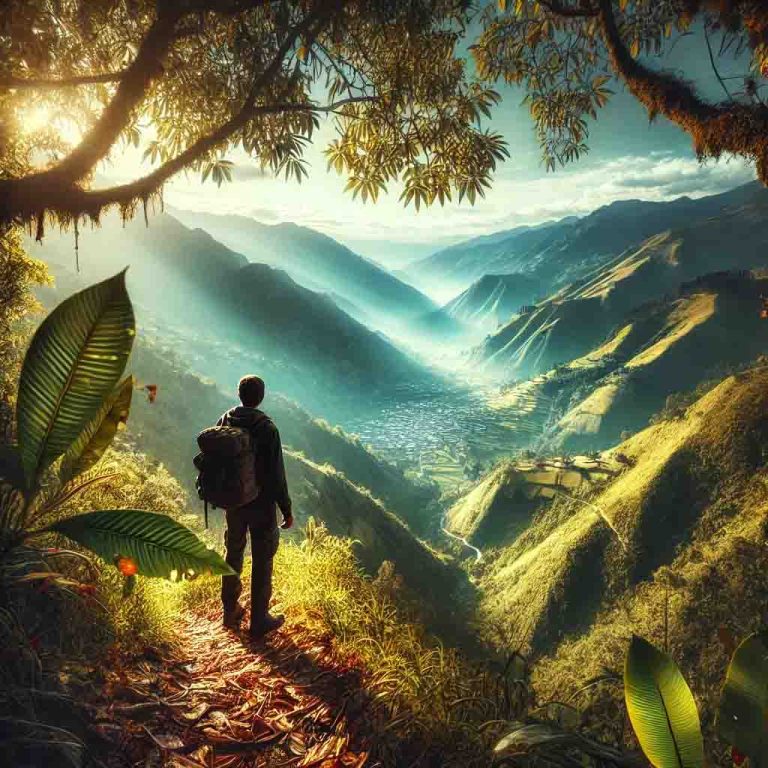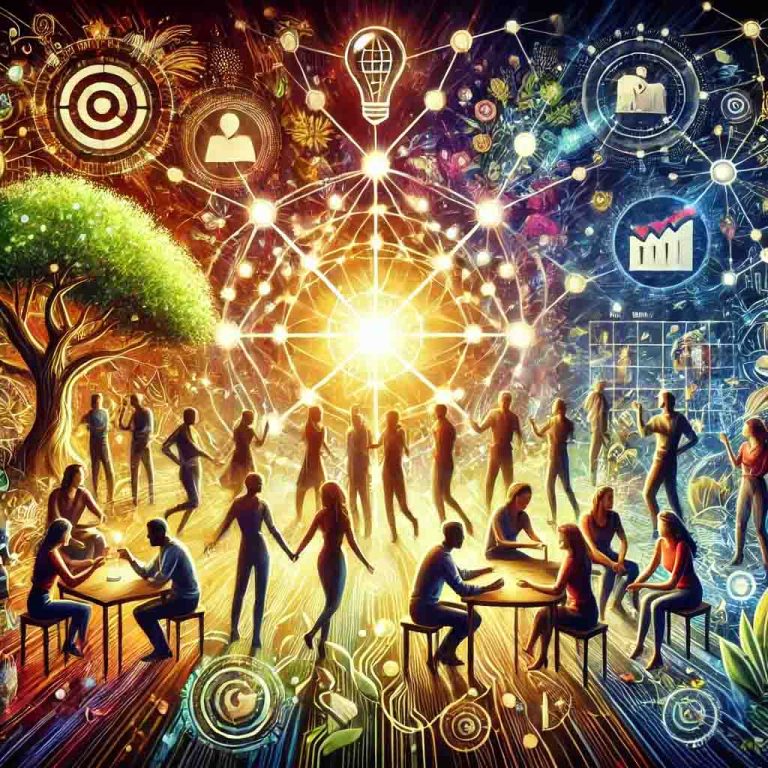Traditional Andean Natural Healing Guide
“In the embrace of the Andean mountains, healing is not just an act but a sacred journey that connects us to the earth, ancestors, and the wisdom that flows through all living things.” — Traditional Andean Saying
Introduction: The Living Legacy of Andean Healing
High in the mist-covered peaks of the Andes, where the air is thin and life demands resilience, generations of healers have cultivated a profound system of natural medicine that remains vibrant and relevant in today’s world. According to the Pan American Health Organization’s 2024 Indigenous Healing Systems Report, approximately 80% of the rural Andean population still relies primarily on traditional healing practices for their healthcare needs, while interest from the global wellness community has surged by over 300% in the past decade.
The Andean approach to healing isn’t simply about treating symptoms—it’s a holistic system that addresses the physical, emotional, spiritual, and communal aspects of wellness. Rooted in a worldview that sees humans as integral parts of the natural world rather than separate from it, these traditions offer powerful insights for those seeking more balanced and sustainable approaches to health.
This guide will walk you through the essential elements of Andean natural healing—from its philosophical foundations to practical applications—providing you with both timeless wisdom and actionable knowledge you can incorporate into your modern wellness journey.
The Philosophy of Andean Healing: A Different Way of Seeing
At the heart of Andean healing lies a worldview fundamentally different from conventional Western medicine. Rather than viewing the body as a machine with separate parts that can be fixed independently, the Andean perspective sees health as a state of harmony between interconnected forces:
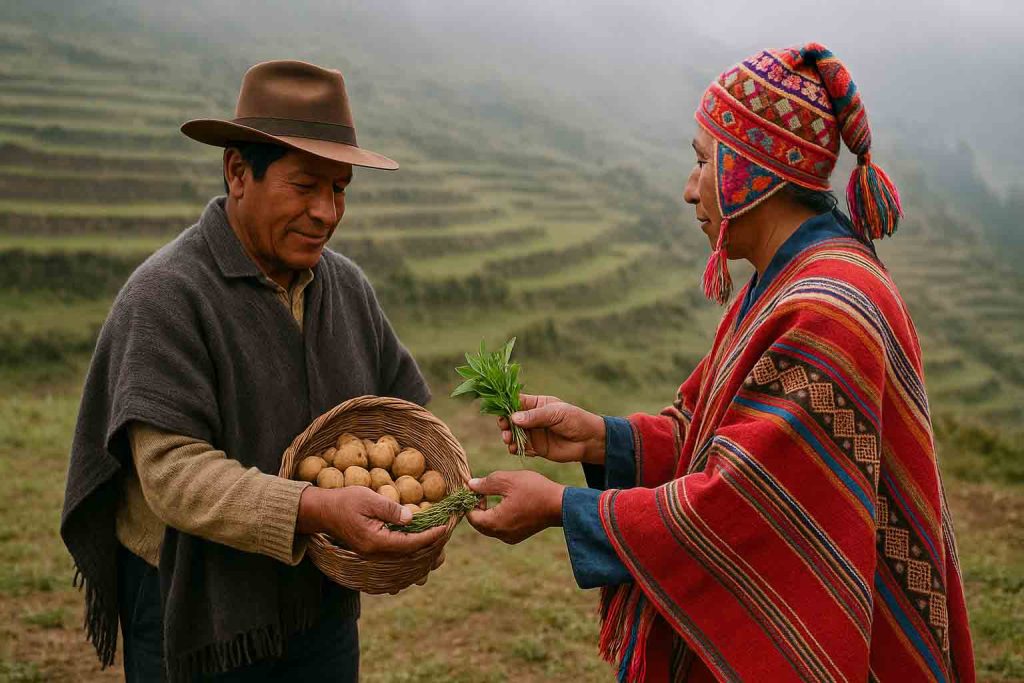
Ayni: The Principle of Reciprocity
The concept of ayni—sacred reciprocity—forms the cornerstone of Andean healing philosophy. Health comes from maintaining balanced exchanges between:
- Person and Nature: The environment provides healing elements, and humans must give back through respectful stewardship
- Body and Spirit: Physical and spiritual well-being cannot be separated
- Individual and Community: Personal health is inseparable from community wellness
According to Dr. Elena Villanueva of the Andean Medical Anthropology Institute, “When ayni is disrupted—when we take without giving, when we separate body from spirit, or when we isolate ourselves from community—illness inevitably follows.” This understanding shapes every aspect of healing practices.
The Three Worlds (Pacha)
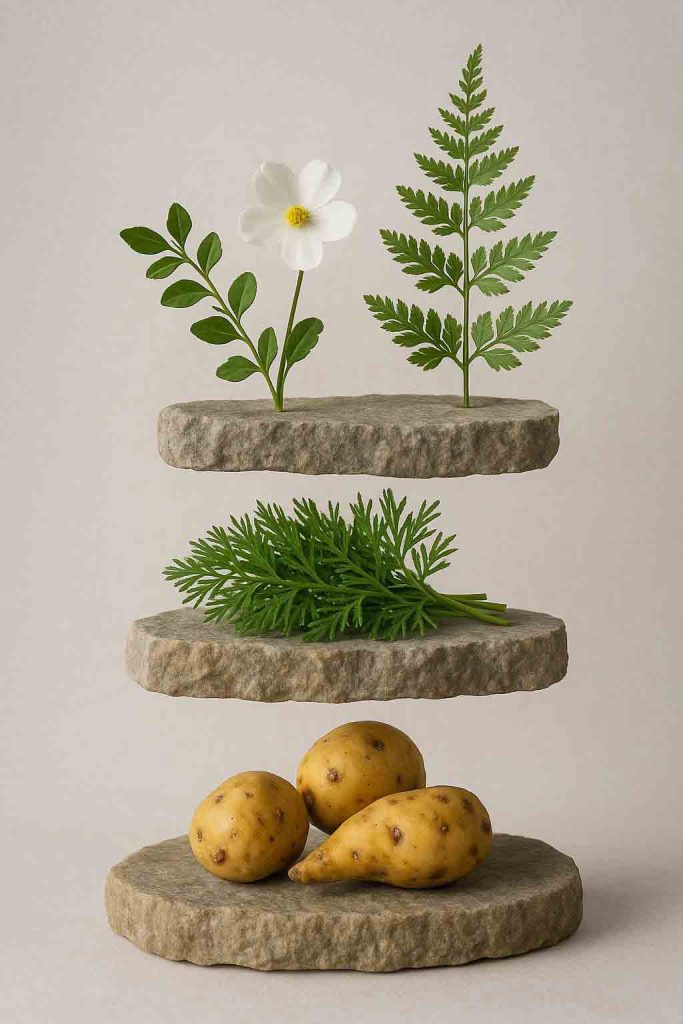
upper world), Kay Pacha (ground plants/herbs – the existing world), and Ukhu Pacha (roots/tubers – under world)
Andean cosmology recognizes three interconnected realms that influence health:
- Hanan Pacha (Upper World): The realm of celestial energies and spiritual forces
- Kay Pacha (This World): The material plane where we live
- Ukhu Pacha (Under World): The realm of ancestors, earth energies, and deep wisdom
True healing must address all three realms simultaneously, as imbalances in one inevitably affect the others. This comprehensive approach explains why Andean healing practices often combine physical treatments with spiritual ceremonies and community involvement.
Energy as the Foundation of Health
The Andean concept of kawsay (life energy) parallels notions like qi in Chinese medicine or prana in Ayurvedic traditions. This vital force flows through all living things and must circulate freely for health to flourish.
Disease in the Andean tradition is often understood as disrupted energy flow—whether from environmental factors, emotional disturbances, spiritual imbalances, or social disharmony. Restoring proper energy flow therefore becomes the primary goal of healing interventions.
Traditional Andean Healers: Guardians of Ancient Knowledge
The Andean healing tradition is kept alive through several distinct types of healers, each with specialized knowledge and skills passed down through generations:
Paqo (Spiritual Healer)
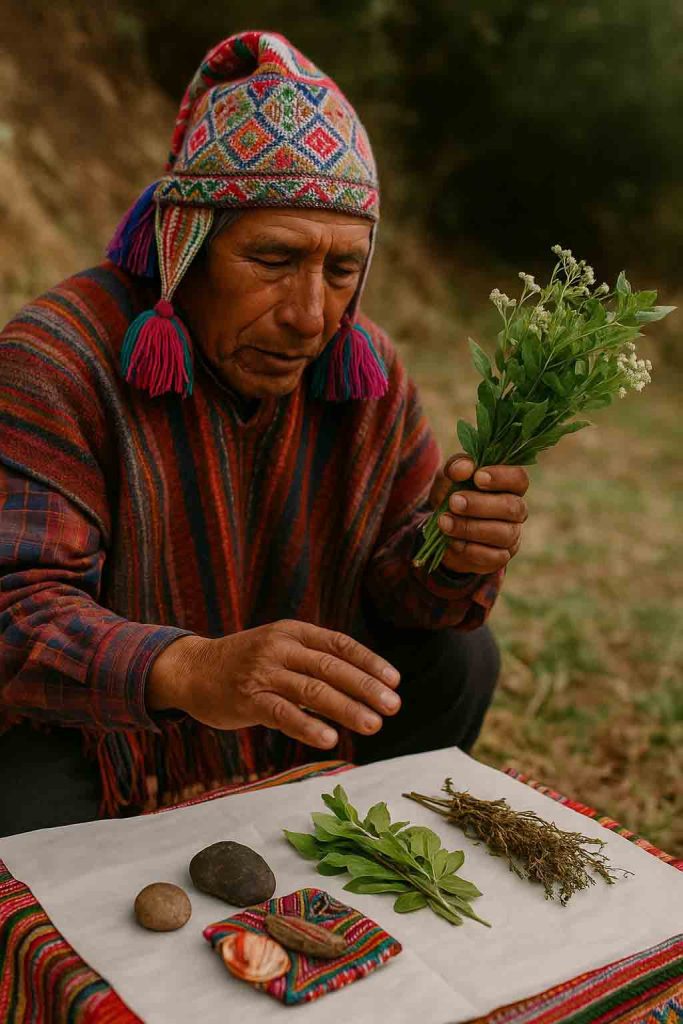
The Paqo works primarily with energy and spiritual forces, maintaining connections between the three worlds. Their practices include:
- Despacho ceremonies: Ritual offerings to restore balance with nature and spiritual forces
- Energy readings: Detecting disturbances in a person’s energy field
- Soul retrieval: Recovering parts of the self lost through trauma or illness
Hampiq (Medicine Person)
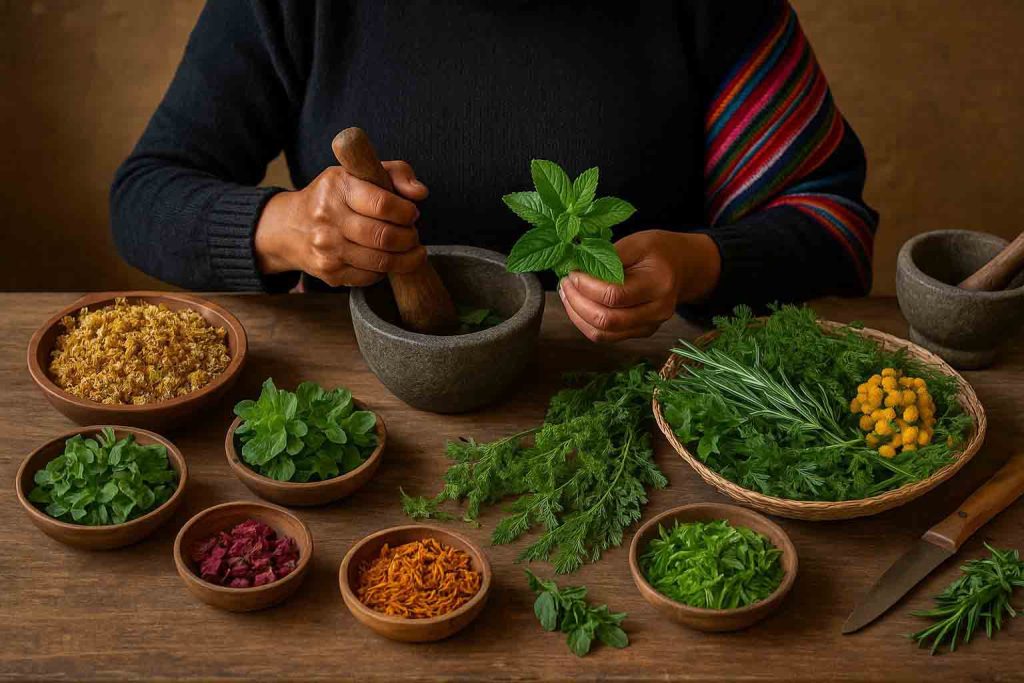
The Hampiq specializes in herbal medicine and physical healing techniques:
- Plant medicine preparation: Creating tinctures, poultices, teas, and other herbal remedies
- Physical treatments: Including massage, bone setting, and thermal therapies
- Nutritional healing: Prescribing specific foods to address imbalances
Yachaq (Wisdom Keeper)
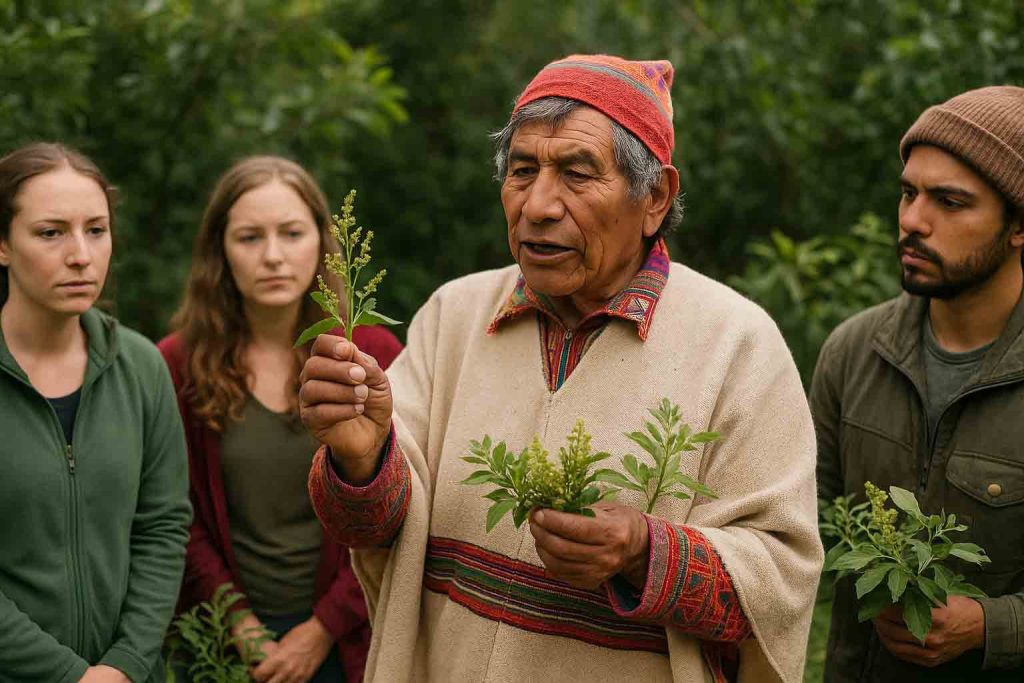
The Yachaq preserves and shares the philosophical and spiritual foundations of Andean culture:
- Teaching ancestral wisdom: Ensuring healing traditions are transmitted accurately
- Interpreting cosmological signs: Reading natural phenomena to guide community decisions
- Conducting major ceremonies: Leading rituals that maintain cosmic balance
QollaRuna (Community Healer)

The QollaRuna focuses on practical everyday healing within the community:
- Attending births: Providing prenatal and postnatal care
- First response healing: Addressing common illnesses and injuries
- Preventative practices: Teaching basic health maintenance
Most traditional communities benefit from the presence of multiple types of healers working in harmony, creating a comprehensive healthcare system that addresses all aspects of wellbeing.
Essential Andean Medicinal Plants: Nature’s Pharmacy

specimens displayed on wooden shelves
The Andean region is home to one of Earth’s most diverse botanical treasures, with thousands of medicinal plants growing across its varied ecological zones. Research published in the Journal of Ethnopharmacology (2024) documented over 500 medicinal plant species used exclusively in Andean healing traditions, with approximately 30% showing significant bioactive properties confirmed by modern laboratory analysis.
Foundational Healing Herbs
Several plants form the backbone of Andean herbal medicine:
Muna (Andean Mint)
- Traditional uses: Respiratory conditions, digestive disorders, inflammation
- Preparation methods: Tea, steam inhalation, poultice
- Modern research: Contains potent antimicrobial compounds and anti-inflammatory properties
Uña de Gato (Cat’s Claw)
- Traditional uses: Immune system strengthening, arthritis, digestive issues
- Preparation methods: Decoction, tincture, capsules
- Modern research: Contains oxindole alkaloids that demonstrate immunostimulant and anti-inflammatory effects
Sangre de Drago (Dragon’s Blood)
- Traditional uses: Wound healing, skin conditions, digestive issues
- Preparation methods: Topical application, diluted oral solution
- Modern research: Contains proanthocyanidins with potent antioxidant and tissue-healing properties
Chanca Piedra (Stone Breaker)
- Traditional uses: Kidney stones, gallstones, liver support
- Preparation methods: Tea, tincture
- Modern research: Shows significant effects on urinary calculi and hepatoprotective properties
Preparing Andean Remedies

Traditional preparation methods preserve and enhance the healing properties of these plants:
- Decoction (Hervido): Simmering tougher plant parts like bark, roots, and seeds to extract deep-acting compounds
- Infusion (Mate): Steeping leaves and flowers in hot water to extract gentle active compounds
- Maceration (Macerado): Soaking plants in cold water, alcohol, or other menstrums to extract specific compounds
- Poultice (Emplasto): Creating paste-like applications for external treatment of wounds and inflammations
The effectiveness of these remedies often depends on precise harvesting practices—many plants are collected according to lunar cycles, at specific times of day, or with accompanying ritual acknowledgments to honor the plant’s spirit.
[Learn more about specific Andean healing herbs and their applications in our comprehensive guide: “Essential Andean Healing Herbs: A Complete Guide”]
Energy and Spirit in Andean Healing: Beyond the Physical
Andean healing traditions recognize that many illnesses originate from or are complicated by disturbances in the energetic and spiritual dimensions. These invisible factors can be as important as physical interventions in the healing process.
Susto (Soul Shock)
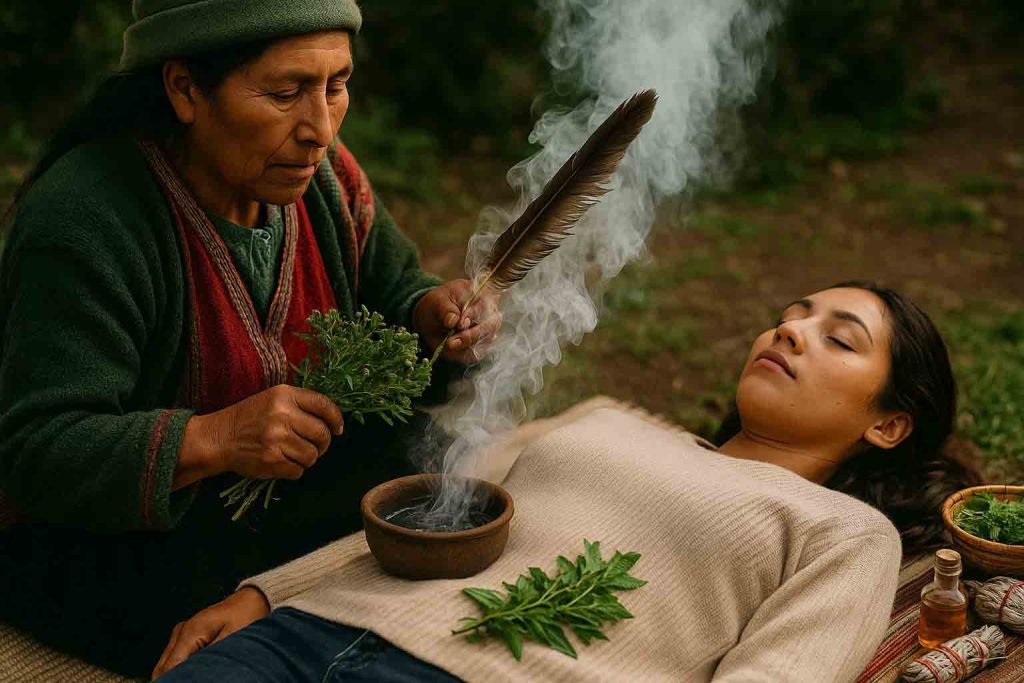
One of the most commonly diagnosed conditions in Andean healing is susto—a state of energetic disruption following traumatic experiences. Symptoms include:
- Insomnia and disturbed sleep
- Unexplained anxiety and fear
- Digestive disturbances
- Diminished life force
- Susceptibility to physical illness
Treatment for susto typically involves ceremonies to call back displaced aspects of the self, often incorporating:
- Limpia (energy cleansing) with plants, feathers, or smoke
- Saminchay (breath work) to restore vital energy
- Community support and reintegration
Reading Coca Leaves
For thousands of years, coca leaves (not to be confused with their extracted alkaloid cocaine) have served as a sacred diagnostic tool in Andean healing. The practice of coca kintu—reading patterns formed by coca leaves—helps healers:
- Identify the underlying causes of illness
- Determine appropriate treatments
- Connect with spiritual guidance
- Understand a patient’s life circumstances
The American Journal of Cultural Anthropology’s 2024 study found that experienced coca leaf readers demonstrated remarkable diagnostic accuracy when their findings were later compared with conventional medical assessments—particularly for conditions with strong psychosomatic components.
Mesa Ceremonies
The mesa (sacred altar or bundle) serves as the Andean healer’s primary tool for energy work and spiritual healing. A traditional mesa contains:
- Khuyas: Stones embodying specific healing energies
- Sacred plants: For cleansing and protection
- Ritual objects: Connected to ancestral powers
- Directional emblems: Representing cosmic forces
During healing ceremonies, the mesa becomes the focal point for manipulating subtle energies and connecting with spiritual allies who assist in the healing process.
[Discover how to incorporate energy healing into your wellness practice with our guide: “Andean Energy Healing Practices: Ancient Techniques for Modern Balance”]
Seasonal Healing Practices: Harmony with Nature’s Cycles
Andean healing is deeply attuned to natural cycles, with specific practices aligned with seasonal changes. This cyclical approach ensures that healing interventions work with rather than against the energetic patterns of the natural world.
Rainy Season (Paray Tiempo)
During the rainy season (approximately November to April), healing focuses on:
- Respiratory support: As humidity increases respiratory challenges
- Immune strengthening: To counter increased pathogen activity
- Mood balancing: Addressing emotional effects of reduced sunlight
- Detoxification: Preparing the body for the transition to dry season
Key practices include steam treatments with eucalyptus and muna, increased consumption of immune-supporting roots like maca, and community ceremonies to honor water elements.
Dry Season (Ch’aki Tiempo)
The dry season (approximately May to October) shifts focus to:
- Hydration support: Maintaining moisture balance in body tissues
- Skin care: Protecting against increased UV exposure and dryness
- Joint health: Addressing issues that intensify in colder, drier conditions
- Energy conservation: Building reserves for the coming transition
Healing practices emphasize moistening herbs like aloe vera, protective plant oils for skin, and warming therapies including sunbaths and heat applications to joints.
Transition Periods
The most critical times for preventative care are the transition periods between seasons, when the body must adapt to changing environmental conditions. During these times (April-May and October-November), traditional practices emphasize:
- Gentle cleansing: Supporting the body’s adaptation processes
- Balance restoration: Harmonizing elements disturbed by seasonal shifts
- Protective measures: Strengthening boundaries against new seasonal challenges
Andean Diagnosis Methods: Understanding the Roots of Illness

charts, and intuition-enhancing plants
Andean healing incorporates sophisticated diagnostic approaches that assess multiple dimensions of a person’s condition:
Pulse Reading (Pulso)
Similar to but distinct from Chinese pulse diagnosis, Andean pulse reading evaluates not only heart rhythm but energy flow through multiple bodily systems. A skilled practitioner can detect:
- Organ system imbalances: Through variations in pulse quality at different points
- Energy blockages: Indicated by interruptions in pulse flow
- Emotional disturbances: Reflected in rhythm variations
- Spiritual influences: Sensed through subtle pulse qualities
Urine Analysis (Hispay Qhaway)
Traditional urine analysis evaluates:
- Color variations: Indicating different systemic imbalances
- Sediment patterns: Revealing tissue breakdown processes
- Surface tension: Reflecting hydration and kidney function
- Odor characteristics: Signaling metabolic disturbances
Facial Diagnosis (Uya Qhaway)
The face serves as a map of internal conditions, with different areas corresponding to specific organ systems and energy centers. Diagnostic signs include:
- Color variations: Such as pallor, flushing, or yellowness
- Texture changes: Reflecting nutritional status and toxin levels
- Lines and markings: Indicating chronic stresses on specific systems
- Eye qualities: Revealing deeper constitutional patterns
Intuitive Assessment
Perhaps most importantly, Andean healers develop highly refined intuitive capabilities through years of training. This allows them to:
- Sense energetic disturbances directly
- Receive guidance from spiritual allies about appropriate treatments
- Perceive connections between seemingly unrelated symptoms
- Identify root causes that may elude conventional analysis
Research from the University of Cusco’s Traditional Medicine Department (2024) found that experienced Andean diagnosticians accurately identified conditions later confirmed by laboratory testing in approximately 73% of cases—particularly impressive for functional disorders that often challenge conventional diagnostic methods.
Healing Rituals and Ceremonies: Sacred Interventions

Ceremonial practices form an essential component of Andean healing, addressing dimensions of illness that purely physical treatments cannot reach:
Limpia (Cleansing Ceremony)
The limpia removes accumulated negative energies and spiritual intrusions through:
- Egg cleansing: Passing an egg over the body to absorb disruptive energies
- Herbal bundles: Sweeping the energy field with specific plant combinations
- Smoke purification: Using sacred plants like palo santo or white sage
- Sound cleansing: Employing bells, whistles, or chanting to disperse stagnant energies
A 2024 psychophysiological study published in Complementary Therapies in Medicine found that participants who received traditional limpia treatments showed measurable reductions in stress hormones and improved heart rate variability compared to control groups.
Despacho (Offering Ceremony)
The despacho restores balance between the human and natural/spiritual worlds through carefully constructed offerings that may include:
- Kintu: Sacred coca leaf arrangements
- Sweet elements: Representing nurturing energies
- Seeds and grains: Symbolizing abundance and growth potential
- Personal items: Connecting the offering to specific intentions
These offerings are bundled, blessed, and then burned, buried, or placed in flowing water to transmit intentions to the appropriate spiritual forces.
Karpay (Initiation and Empowerment)
The karpay ceremony transmits healing energies and capabilities through:
- Direct transmission: From teacher to student or healer to patient
- Sacred site connection: Activating energies at power places in nature
- Elemental immersion: Working with fire, water, earth, and air forces
- Ancestral invocation: Calling on lineage wisdom for support
These ceremonies create profound shifts in consciousness that can catalyze healing on multiple levels simultaneously.
Integrating Andean Healing with Modern Life: Practical Applications

While traditional Andean healing developed in a specific cultural context, many of its principles and practices can be effectively adapted to contemporary settings:
Daily Wellness Practices
Simple techniques that anyone can incorporate include:
- Morning coca or herbal tea ritual: Setting intentions for balanced energy
- Gratitude offerings: Small acknowledgments of nature’s gifts before meals
- Energy protection techniques: Visualizations to maintain energetic boundaries
- Mini-limpia: Using simple elements like water or a single herb for regular cleansing
Creating a Home Healing Space
Elements of an Andean-inspired healing space might include:
- Directional altar: With objects representing earth, water, fire, and air
- Healing plants: Both living plants and dried herbs for specific purposes
- Sacred objects: Stones, feathers, or other items with personal significance
- Clean water: For simple cleansing and blessing practices
Community Healing Exchanges
The communal aspect of Andean healing can be honored through:
- Skill-sharing circles: Where people exchange different healing modalities
- Group ceremony: Adapted to honor diverse spiritual backgrounds
- Collective plant medicine preparation: Creating remedies together
- Healing meals: Sharing foods prepared with intention and traditional knowledge
Working with Conventional Healthcare
Andean healing can complement conventional medicine through:
- Preventative approaches: Maintaining balance before illness manifests
- Support during medical treatment: Addressing energetic and spiritual dimensions
- Recovery enhancement: Strengthening resilience after medical interventions
- Chronic condition management: Improving quality of life when complete cures are elusive
A 2024 integrative medicine study at Lima’s National University found that patients who combined traditional Andean practices with conventional treatments for chronic conditions reported 47% higher quality-of-life scores than those using conventional medicine alone.
Preservation and Future of Andean Healing: Challenges and Opportunities
Traditional Andean healing faces significant challenges in the modern world:
- Habitat destruction: Threatening medicinal plant populations
- Cultural erosion: As younger generations migrate to urban centers
- Biopiracy: Exploitation of indigenous knowledge without recognition or compensation
- Medical marginalization: Pressure to adopt exclusively Western approaches
Yet promising developments are emerging:
Revival Movements
Indigenous-led initiatives are working to:
- Document oral traditions before they disappear
- Create education programs for new generations of healers
- Establish protected areas for medicinal plant cultivation
- Develop protocols for respectful cross-cultural exchange
Scientific Validation
Research institutions are increasingly studying traditional practices:
- Pharmacological investigation of Andean medicinal plants
- Clinical trials of traditional treatment protocols
- Documentation of diagnostic accuracy
- Analysis of ceremony-induced neurophysiological changes
Policy Recognition
Some Andean nations have begun officially recognizing traditional medicine:
- Peru’s National Institute of Traditional Medicine now certifies practitioners
- Bolivia’s constitution explicitly protects indigenous healing knowledge
- Ecuador has established integrative health centers in public hospitals
- Colombia funds traditional medicine preservation programs
Conclusion: The Living Wisdom
The ancient wisdom of Andean healing remains profoundly relevant in our modern world. By understanding health as a state of harmony between person and nature, body and spirit, individual and community, these traditions offer a much-needed corrective to fragmented approaches to wellness.
Whether you’re drawn to the practical plant knowledge, the sophisticated energy work, or the profound philosophical insights, Andean healing traditions invite you to see wellness through a different lens—one that might just transform your relationship with health and healing.
As you explore these traditions, remember that true healing is never about quick fixes or miracle cures, but about restoring right relationship with yourself, your community, and the natural world. In the words of a traditional Andean blessing: “May you walk in beauty, with the mountains behind you, the rivers beside you, and the stars to guide your way.”



